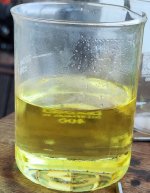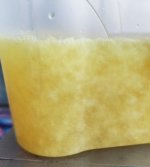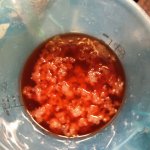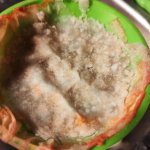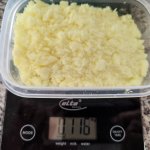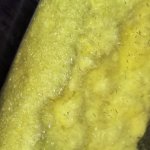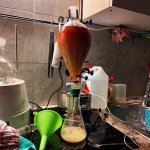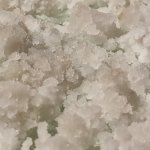- Joined
- Sep 23, 2022
- Messages
- 158
- Reaction score
- 71
- Points
- 28
I visited a friend today, let us call him SWIM 
He tried an alternative way for p2np, by Microwave, on basis of instruction of William Dumpler.
Microwave variant:
1. 100 ml benzaldehyde, 100 ml nitroethane, 25 ml glacial acetic acid and 20 ml n-butylamine was added in 500 ml glass.
2. Put a rubber glove on a glass.
3. The glass was put in the microwave.
4. Turn on the power of 750 W and warm so much time so that the mixture does not boil.
5. We repeat the step 4 several times, let me cool the mixture. Minimum 6 irradiations.
6. After that, add 100 ml IPA, stirred and put in the freezer for 12 hours.
7. After that time, P2NP was crystallized.
8. Filtered and dried.
But the crystals were formed immediately after putting the 2 solutions together. SWIM used 2 beaker parallel, after every irradiation (6 times), he put the beaker into cold water for some time, 1-2 minutes, before next irradiation. At the end, he was able to turn the box upside down without any moving of the substance, still before putting it into the freezer...it was amazing and now he will wait till next day for filtering and drying.
What do you think?! Looks good?
I am not experienced but think it worked well, even if the solution boiled while first irradiation (730W, after aprox 1 min), so you have to watch the glove all the time.
If it blows up, switch the microwave off and cool the beaker.
That was his first time ever he did something like this, but it was a nice to see... tomorrow he will try to produce aluminium amalgame by using gallium and if it reacts with the p2np. Its just a tryout, because there are less experiences out there so far. If it works, it would be an awesome alternative to Al/HgCl2.
I will keep reporting about it, if it works.
He tried an alternative way for p2np, by Microwave, on basis of instruction of William Dumpler.
Microwave variant:
1. 100 ml benzaldehyde, 100 ml nitroethane, 25 ml glacial acetic acid and 20 ml n-butylamine was added in 500 ml glass.
2. Put a rubber glove on a glass.
3. The glass was put in the microwave.
4. Turn on the power of 750 W and warm so much time so that the mixture does not boil.
5. We repeat the step 4 several times, let me cool the mixture. Minimum 6 irradiations.
6. After that, add 100 ml IPA, stirred and put in the freezer for 12 hours.
7. After that time, P2NP was crystallized.
8. Filtered and dried.
But the crystals were formed immediately after putting the 2 solutions together. SWIM used 2 beaker parallel, after every irradiation (6 times), he put the beaker into cold water for some time, 1-2 minutes, before next irradiation. At the end, he was able to turn the box upside down without any moving of the substance, still before putting it into the freezer...it was amazing and now he will wait till next day for filtering and drying.
What do you think?! Looks good?
I am not experienced but think it worked well, even if the solution boiled while first irradiation (730W, after aprox 1 min), so you have to watch the glove all the time.
If it blows up, switch the microwave off and cool the beaker.
That was his first time ever he did something like this, but it was a nice to see... tomorrow he will try to produce aluminium amalgame by using gallium and if it reacts with the p2np. Its just a tryout, because there are less experiences out there so far. If it works, it would be an awesome alternative to Al/HgCl2.
I will keep reporting about it, if it works.

